Saturday, March 23, 2019
Catch 22 reviewed by Margie Taylor
Back in 1977, Joseph Heller wrote the following for a collection of essays
about the 1960s: “The concept of the novel came to me as a seizure, a single
inspiration. I’d come to the conclusion that I wanted to write a novel, and
moving back to New York after two years of teaching college in Pennsylvania
sent the ambition coursing again. I had no idea what it would be about,
however. Then one night the opening lines of Catch-22 – all but the
character’s name, Yossarian – came to me: ‘It was love at first sight.
The first time he saw the chaplain he fell madly in love with him.'”*
Heller didn’t have the hero’s name at this point, the chaplain could have
been anywhere – he could have been a prison chaplain, for all Heller knew – and
he didn’t even have the title. For seven years, while Heller was composing his
story of the book was being written, edited, and made ready for publication, it
was called Catch-18. Then, early in 1961, just a few months before Simon
and Schuster were preparing to launch the novel, Leon Uris came out with Mila
18. Uris was a best-selling author; Heller was practically unknown to the
general public. A new title was required. Catch-11 was promising, but it
was too close to Frank Sinatra’s hit movie, Ocean’s Eleven, which had
come out the year before. Heller came up with Catch-14,
which had the same number of syllables, but his editor, Robert Gottlieb, didn’t
like it.
This time it was Gottlieb who had the late-night flash of inspiration: Catch-22,
he insisted, was the perfect title. The rest, as they like to say, is history.
Catch-22 became a colloquialism “used to describe a paradoxical situation
from which an individual cannot escape because of contradictory rules or
limitations”, to quote Wikipedia.
This is the kind of trivia I love. I can spend entire mornings, especially
when I have more important things to do, scrolling through page after page of
material only remotely relevant to something I’ve been reading. Or mean to
read. Or once read a very long time ago.
Catch-22 is one of those books. I read it, I think, in high school, although it
certainly wasn’t on the curriculum. I do remember seeing “YOSSARIAN LIVES”
written on the walls of my alma mater so by the time I got to university the
book had achieved cult status (which is, I often think, the only status that
really matters).
Thus is the kind of trivia I love. I can spend entire mornings, especially
when I have more important things to do, scrolling through page after page of
material only remotely relevant to something I’ve been reading. Or mean to
read. Or once read a very long time ago.
Catch-22 is one of those books. I read it, I think, in high school, although it
certainly wasn’t on the curriculum. I do remember seeing “YOSSARIAN LIVES”
written on the walls of my alma mater so by the time I got to university the
book had achieved cult status (which is, I often think, the only status that
really matters).
Set on the island of Pianosa off the coast of Italy in the last days of
World War II, the novel is a satirical take on the madness and futility of war,
based on Heller’s wartime experiences. Like Yossarian, Heller was a bombardier
with the US Army Corps. He would later say that he personally never had a bad
officer, and the anti-war message of the book was influenced more by the Korean
War and McCarthyism. Nevertheless, Heller paints a grim picture of military
incompetence at the highest levels and you can’t help but feel he experienced
at least some of that.
The hero – or anti-hero, perhaps – is Captain John Yossarian, a
28-year-old bombardier who is driven by a single, desperate, impulse: he does
not want to die. And everybody, he believes, is trying to kill him.
Yossarian has flown more than 50 bombing missions but each time he reaches
the quota and hopes to be discharged, the colonels raise the number of missions
required in order to be sent home. He sees the war as a personal attack on his
person, and the ones he’s the most afraid of are his commanding officers.
Colonel Cathcart, for instance, continually volunteers his men for
perilous missions in a bid to be promoted to General. Colonel Cargill, employed
as an Army troubleshooter, is a former marketing executive who “could be relied
on to run the most prosperous enterprise into the ground. He was a self-made
man who owed his lack of success to nobody”. Major _ _ de Coverley, the head of
the squadron, is so revered by his men they’re afraid to ask his first name,
yet he does nothing all day but play horseshoes and rent apartments for
officers in cities the Allies have taken.
As for Major Major Major Major, “Some men are born mediocre, some men
achieve mediocrity, and some men have mediocrity thrust upon them. With Major
Major Major Major it had been all three. Even among men lacking all distinction
he inevitably stood out as a man lacking more distinction than all the rest,
and people who met him were always impressed by how unimpressive he was”.
Those serving in other positions are not much better. The army medic, Doc
Daneeka, is more concerned with his own welfare than that of his patients. The
military has dealt him a terrible blow, he says, keeping him away from his
lucrative medical practice. The mess officer, Milo Minderbinder, is a
sociopathic entrepreneur whose sole loyalty lies with those who pay him. At one
point he contracts a fleet of German pilots to bomb his own squadron. And A. T.
Tappman, the chaplain, is an Anabaptist who is steadily questioning his faith
in a supreme being the longer the war goes on. Who, after all, could blame him?
After a young gunner dies in his arms on a bombing mission over Avignon,
Yossarian loses all taste for battle. He decides “to live forever or die in the
attempt” and spends a lot of time in hospital, faking illness, in order to get
out of combat duty. He pleads with Doc Daneeka to have him declared insane so
he can be discharged and sent home. The doctor agrees that Yossarian would be
crazy to keep on flying. But if he knows he’d be crazy to fly then he’s sane,
and so he can’t be certified as crazy. Which means Yossarian has to keep on
flying. This, the medic says, is Catch-22:
“Catch-22 … specified that a concern for one’s own safety in the face of
dangers that were real and immediate was the process of a rational mind. [A
bombardier] was crazy and could be grounded. All he had to do was ask; and as
soon as he did, he would no longer be crazy and would have to fly more
missions. [A bombardier] would be crazy to fly more missions and sane if he
didn’t, but if he was sane he had to fly them. If he flew them he was crazy and
didn’t have to; but if he didn’t want to he was sane and had to. Yossarian was
moved very deeply by the absolute simplicity of this clause of Catch-22.one
would be crazy to fly more missions and sane if you didn’t, but if you didn’t,
it meant you were sane and had to keep on flying.”
As Yossarian says, “That’s some catch, that Catch-22”.
And the doctor agrees: “It’s the best there is”.
This is a long, convoluted, and somewhat confusing novel, alternating
between nightmare and hilarity. It flashes backward and forward in time, and
involves at least 50 characters by my own count, each with their own story and
having some connection with Yossarian.
There’s Lieutenant Nately, the 19-year-old son of a wealthy family, who
falls in love with a prostitute, is killed on a mission by a pilot from his own
squadron, and whose prostitute, known as “Nately’s whore”, goes after Yossarian
in a bid for revenge. There’s Snowdon, the gunner who died in Yossarian’s arms
during a bombing mission over Avignon; Hungry Joe, the former Life
photographer who’s obsessed with trying to take pictures of naked women; and
Orr, the simple-minded bomber pilot who crash lands every plane he flies,
escaping unscathed every time. Until, finally, he sets off on a mission and
never comes back.
Yossarian takes Nately’s death very hard. He decides he’s done with war,
done with flying yet another mission. He’s flown 70 of them by now, and once
again the quota’s been raised, this time to 80. He absconds to Rome, and spends
a nightmarish, hallucinogenic night wandering the streets, before being
arrested for being in the city without a pass. He’s taken back to Pianosa where
he faces a court-martial for refusing to fly. Colonel Cathcart offers him a
deal: he’ll send Yossarian home with an honourable discharge as long as he
promises that when he gets back to the States he’ll praise the military for how
they’re handling things here, and support Cathcart’s 80-mission policy.
Reluctantly, Yossarian agrees to
the deal, but as he’s leaving the room he’s attacked by Nately’s whore and ends
up in the hospital.
There, he has a change of heart. He’s not going to go along with the
colonels: it’s an odious deal, that will put other men’s lives at risk. The
chaplain bursts in with electrifying news: Orr isn’t dead, after all. He crash
landed his plane deliberately and washed ashore in Sweden. Yossarian realizes
Orr must have planned this all along, and if Orr managed to escape, there’s
hope for them all. He, too, will run away to Sweden, and leave the insanity of
the war behind him. He gets dressed and steps outside, where Nately’s whore is
waiting for him. She tries to stab him, misses, and he runs off into the
distance.
The book ends there. We are not to know if Yossarian was successful
in his escape, if he eventually got to Sweden or not. I take comfort in the
thought that whoever penned that graffiti was right: somehow, somewhere,
Yossarian lives.
*The Sixties, ed. Lynda Rosen Obst (New York: Random House/Rolling
Stone Press, 1977), p. 50.
Subscribe to:
Post Comments (Atom)















































































































































































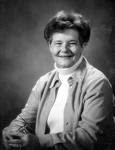


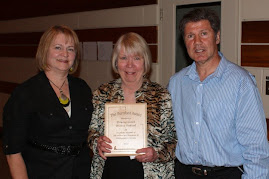
































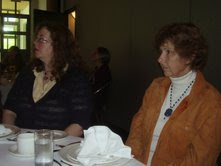






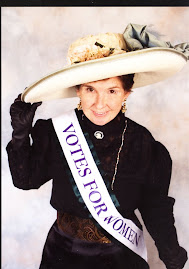











































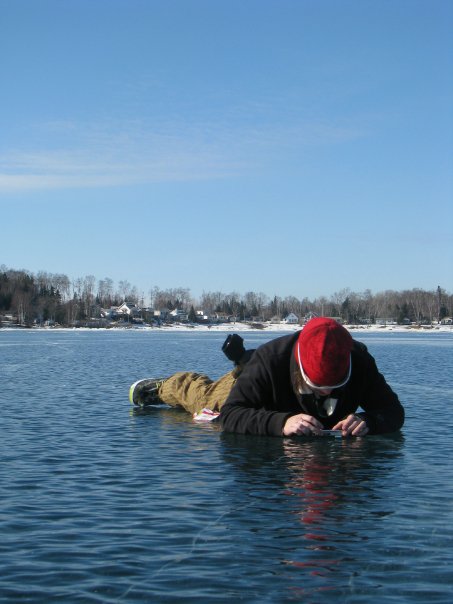
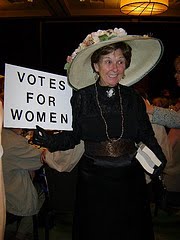


No comments:
Post a Comment